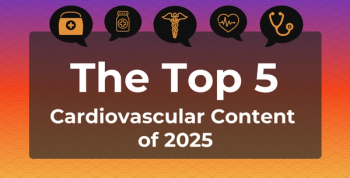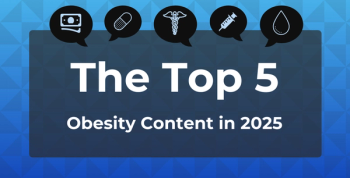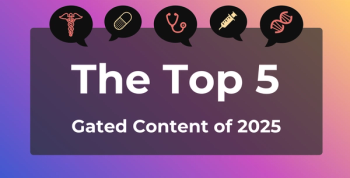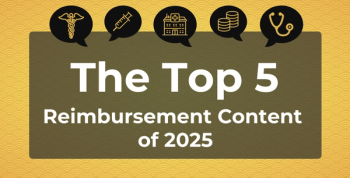
5 Things That Widen Racial Disparities in Childhood Obesity
Key Takeaways
- Obesity rates among Black children rose significantly, with disparities linked to social determinants of health and environmental factors.
- Food insecurity, prevalent in low-income communities, contributes to unhealthy diets and increased obesity rates.
Racial disparities in childhood obesity have risen due to social determinants, food insecurity, and systemic barriers, impacting minority communities across the US.
Childhood obesity has skyrocketed in the last 3 decades. Between 2017 and March 2020, the CDC reported the prevalence of US child and adolescent obesity at 19.7%, meaning nearly 14.7 million youths aged 2 to 19 years old have obesity.1
Recent studies have further examined the health repercussions of the COVID-19 pandemic; more specifically, the impact it had on minority child and adolescent obesity, and the data revealed something jarring. A study published in the Annals of Internal Medicine revealed that the prevalence of obesity amongst Black children and adolescents rose from 22.4% to 35.8% from 2011 to August 2023. At the end of the study, the obesity prevalence in Black children and adolescents was 62.73% higher than the overall prevalence across all races and ethnicities combined.2
Here are 5 things researchers attributed the striking increase to societal and environmental disparities in minority communities across the US.
1. Social Determinants of Health and Built Environment
As of 2023, the poverty rate in America is 11.1%, or nearly 36.8 million people, reported the US Census Bureau. Out of the total, 20.6% living in poverty are Black, 16.6% are Hispanic, and 24.2% are Native American or Alaskan compared with the 9.5% who are White.4 Lower-income populations struggle with access to nutritious foods, which is also due to their neighborhood or location.
Disadvantaged neighborhoods often have limited access to green spaces like parks and playgrounds, affordable and healthy grocery stores, and safe environments with minimal violence and crime—all of which are considered essential components of healthy living.5
2. Food Insecurity
Economic status plays a substantial part in childhood and adolescent obesity regarding food insecurity, which not only pertains to lack of access to food but also access to quality and healthy foods. Poverty is a pivotal contributor to unhealthy diets among low- and middle-income populations.6 While food insecurity and poverty are traditionally associated with malnutrition, they can also increase the prevalence of obesity.6
In 2023, 13.5% of American households were food insecure.7 Food insecurity is also associated with a greater consumption of sugar-sweetened drinks and fast food, in addition to binge eating. Studies also suggest a strong association between food insecurity and obesity in women and mildly mixed results for men and children. Food insecurity rates are even higher among households including those with children, single parents, Black, and Hispanic, to name a few.8
Although there are government resources aimed at bridging food insecurity in low- and middle-income populations, there are limitations. For example, the Supplemental Nutritional Assistance Program (SNAP) and the Special Supplemental Nutrition Program for Women, Infants, and Children, known as WIC, provide low-income households with vouchers that provide supplemental financial relief for food but are only accepted at local or participating retailers. Despite the assistance, 61% of SNAP participants reported that they were still struggling with the cost of healthy foods, according to a study conducted by the US Department of Agriculture. Other barriers reported were a lack of time to prepare meals from scratch, a need for transportation to the grocery store, and no storage for fresh or cooked foods.9
3. Marketing Influence—“Food Swamps” and Targeted Ads
Food swamps are also prevalent in economically disadvantaged neighborhoods, meaning there is an abundance of fast-food restaurants, liquor stores, and convenience stores selling high-calorie, nutrient-poor foods. Not only are they prevalent in these areas, but targeted ads and marketing for unhealthy foods and beverages have been acknowledged as a risk factor for childhood obesity.10
In the US, food and beverage companies spend nearly $14 billion a year on fod advertising, with more than 80% of this promoting fast food, sugary drinks, candy, and unhealthy snacks, according to the University of Connecticut’s Rudd Center for Food Policy and Health. The amount spent on unhealthy food advertisements astronomically trumps that of the CDC’s $1 billion budget for chronic disease prevention and health promotion.
Furthermore, the Rudd Center also reported that Black and Hispanic youth are exposed to food advertising and food marketing more than their White counterparts. In 2021, the
Children are also most susceptible to persuasive strategic marketing and ads, as their cognitive development is limited, and therefore, they are less likely to differentiate television advertising from regular programming, in addition to interpreting said ads as factual.11
4. School Supports and Community Programming
Schools and community programs are also deeply connected to child health. The Rudd Center has documented a dramatic increase in unhealthy foods in school environments over the past few decades. However, despite initiatives to increase the prevalence of healthy and nutritious foods in schools, Black and Hispanic children were once again found to be disadvantaged.
“Less-affluent places are more likely to have obesogenic features, and this likely explains the higher rates of obesity among Latino, Black, and Filipino children in minority-segregated schools compared with their co-ethnic peers in integrated schools,” the author of the study wrote.
5. Structural Racism & Systemic Barriers
Systemic barriers can include living in food deserts or food swamps, where access to healthy and nutritious food can be difficult, in addition to its absence and the prevalence of unhealthy food options and an abundance of junk food, sugary drinks, and snacks.
A study published in Cambridge University Press attributes food insecurity to structural racism and overlapping discriminatory practices in housing, education, employment, and health care.12 Many of the preceding factors discussed can also be considered as racist systemic and structural barriers perpetuating disadvantaged communities, many of which are home to Black and Hispanic individuals.
“Many of the racialized differences in obesity rates reflect inequities that are neither natural nor inevitable, but rather the result of unfair social structures or institutional practices that confer unearned privilege to one group while subjugating another group.”
References
1. Childhood obesity facts. Centers for Disease Control and Prevention. April 2, 2024. Accessed July 10, 2025. https://www.cdc.gov/obesity/childhood-obesity-facts/childhood-obesity-facts.html.
2. Wadhera RK. Obesity prevalence among children and adolescents in the United States, 2011 to 2023. Ann Intern Med. Published online July 1, 2025. doi:10.7326/ANNALS-25-00389
3. U.S. Census Bureau, Semega J, Kollar M, Creamer J, Mohanty A. United States Census Bureau; 2019.
4. Poverty rate by race/ethnicity. KFF. October 25, 2024. Accessed July 10, 2025.
5. Liu D, Kwan MP, Kan Z. Assessment of doubly disadvantaged neighborhoods by healthy living environment exposure. Appl Spat Anal Policy. 2023;16(2):689-702. doi:10.1007/s12061-022-09495-7
6. Carvajal-Aldaz D, Cucalon G, Ordonez C. Food insecurity as a risk factor for obesity: a review. Front Nutr. 2022;9:1012734. doi:10.3389/fnut.2022.1012734
7. Reduce household food insecurity and hunger - NWS‑01 infographic. Office of Disease Prevention and Health Promotion. Accessed July 10, 2025.
8. Mishra S. The influence of food insecurity on obesity: a call to action. Obesity Medicine Association. June 30, 2023. Accessed July 10, 2025.
9. USDA releases study on hurdles to healthy eating on SNAP. U.S. Department of Agriculture. June 23, 2021. Accessed July 10, 2025.
10. Smith R, Kelly B, Yeatman H, Boyland E. Food marketing influences children's attitudes, preferences and consumption: a systematic critical review. Nutrients. 2019;11(4):875. doi:10.3390/nu11040875
11. Mahmood N, Sanchez-Vaznaugh EV, Matsuzaki M, Sánchez BN. Racial/ethnic disparities in childhood obesity: The role of school segregation. Obesity (Silver Spring). 2022;30(5):1116-1125. doi:10.1002/oby.23416
12. Williams DR, Braddock A, Houser M, Blair G, Browne N. Review of upstream social factors contributing to childhood obesity. Obes Pillars. 2022 Nov 14; 4:100040. doi: 10.1016/j.obpill.2022.100040. PMID: 37990668; PMCID: PMC10662005.
Newsletter
Stay ahead of policy, cost, and value—subscribe to AJMC for expert insights at the intersection of clinical care and health economics.








